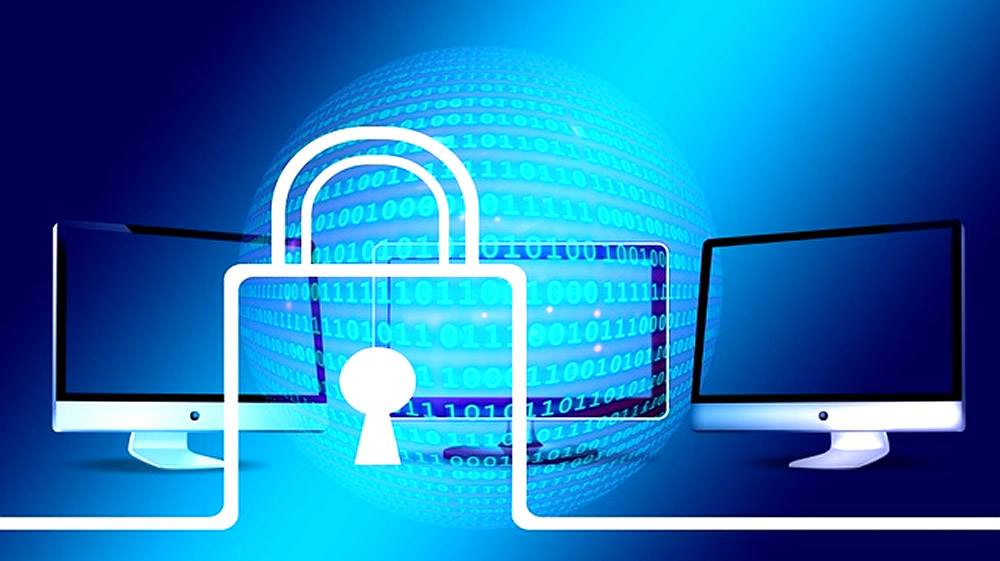In today’s digital era, businesses rely heavily on technology to operate, communicate, and store sensitive information. As a result, cybersecurity has become a crucial aspect of business management.
By investing in professional cybersecurity measures, you can safeguard your organization from data breaches, cyberattacks, and other potential threats. Here are some steps to help protect your business with professional cybersecurity…
15 Steps to protect your business with professional cybersecurity.

– Assess your risks
A comprehensive risk assessment helps you understand the potential vulnerabilities and threats facing your organization. Analyze your IT infrastructure, including hardware, software, and network components, as well as the types of data you handle.
Consider factors such as employee behavior, third-party relationships, and regulatory requirements. A cybersecurity consultant can help identify and prioritize risks based on their potential impact and likelihood.
– Develop a cybersecurity policy
A well-defined cybersecurity policy serves as a roadmap for implementing security measures and managing risks. It should include guidelines for data classification, secure data storage, and data sharing.
Define roles and responsibilities for employees, management, and IT staff, and establish processes for reporting and escalating security incidents. Regularly review and update the policy to ensure it remains relevant and effective.
– Implement strong access controls
Access control mechanisms, such as multi-factor authentication (MFA) and single sign-on (SSO), help ensure that only authorized users can access sensitive data and systems.
Manage user accounts based on the principle of least privilege, which means granting users the minimum necessary permissions to perform their tasks. Regularly review and update access controls to keep pace with organizational changes, such as employee turnover and role changes.
– Train your employees
Employee awareness is crucial for preventing cybersecurity incidents. Develop a comprehensive training program that covers topics such as password management, email security, safe browsing habits, and remote work best practices.
Conduct regular refresher training sessions and consider using gamification techniques to increase engagement and retention.
– Keep software up-to-date
Outdated software can expose your organization to known vulnerabilities, which cybercriminals can exploit to gain unauthorized access.
Implement a patch management process that includes inventorying your software, tracking available updates, prioritizing patches based on risk, and testing and deploying patches in a timely manner. Consider using automated patch management tools to streamline this process.
– Install security software
Effective security software is essential for detecting and mitigating cyber threats. Deploy antivirus and anti-malware solutions on all endpoints, including servers, workstations, and mobile devices.
Consider using advanced threat detection tools, such as endpoint detection and response (EDR) solutions, to proactively identify and respond to security incidents.
– Encrypt sensitive data
Data encryption helps protect sensitive information from unauthorized access, even if your security measures are compromised.
Implement encryption for data at rest (e.g., on hard drives and storage devices) and data in transit (e.g., during email communications or file transfers). Use strong encryption algorithms and manage encryption keys securely to prevent unauthorized access.
– Regularly backup data
A robust data backup strategy helps you recover from data loss events, such as ransomware attacks or hardware failures. Develop a backup plan that includes identifying critical data, selecting appropriate backup methods (e.g., full, incremental, or differential backups), and determining backup frequency.
Test your backups regularly to ensure they can be successfully restored and store backup copies in a secure, off-site location.
– Monitor your network
Continuous network monitoring helps you detect and respond to potential threats before they cause significant damage. Implement network security monitoring tools, such as intrusion detection systems (IDS) and intrusion prevention systems (IPS), to analyze network traffic for signs of malicious activity.
Use security information and event management (SIEM) solutions to aggregate and analyze security logs from various sources, enabling a more comprehensive view of your security posture.
– Develop an incident response plan
An incident response plan provides a structured approach to managing cybersecurity incidents, minimizing their impact, and preventing future occurrences. The plan should outline the steps for detecting, containing, and eradicating threats, as well as recovering systems and data.
Establish a dedicated incident response team and conduct regular exercises and simulations to test the effectiveness of your plan and improve your team’s readiness. The incident response plan should also include guidelines for communicating with internal stakeholders, customers, and relevant authorities in the event of a breach.
– Secure your supply chain
Third-party vendors and partners can introduce security risks if their systems are compromised. Assess the cybersecurity practices of your suppliers and partners, and ensure they meet your organization’s security standards.
Include cybersecurity requirements in contracts and agreements, and conduct regular audits or assessments to verify compliance.
– Implement network segmentation
Divide your network into smaller segments to limit the potential damage caused by a cyberattack. By isolating critical systems and sensitive data, you can prevent unauthorized access and contain the spread of malware.
Use firewalls, virtual local area networks (VLANs), and access control lists (ACLs) to enforce segmentation and restrict communication between segments based on need-to-know principles.
– Establish a vulnerability management program
Regularly identify and remediate vulnerabilities in your organization’s systems, applications, and network devices. Conduct periodic vulnerability scans and penetration tests to detect weaknesses and validate the effectiveness of your security controls.
Develop a process for prioritizing and addressing identified vulnerabilities based on their risk level and potential impact.
– Enhance physical security
Cybersecurity measures should be complemented by physical security controls to prevent unauthorized access to your organization’s facilities and equipment. Implement access controls, such as badge systems or biometric authentication, to restrict entry to sensitive areas.
Use surveillance cameras, alarms, and security personnel to monitor and protect your premises. Secure network equipment and storage devices in locked rooms or cabinets to prevent tampering.
– Foster a security-focused culture
Encourage a culture of security awareness and vigilance within your organization. This involves promoting good security habits, such as locking workstations when not in use, using strong passwords, and reporting suspicious activity.
Regularly communicate the importance of cybersecurity to all employees, and recognize and reward those who demonstrate exemplary security practices.
By taking these steps and investing in professional cybersecurity, you can protect your business from the growing risks of cyberattacks, safeguarding your valuable data and assets, and maintaining the trust of your customers and partners.
What other measures should the company implement in terms of cybersecurity?

– Mobile Device Security
As more employees use mobile devices for work, ensuring their security is crucial. Implement mobile device management (MDM) and mobile application management (MAM) solutions to control and secure company data on these devices.
Establish policies that require employees to use strong passwords, keep their devices updated, and avoid using public Wi-Fi networks for work-related tasks. Consider enabling remote wiping capabilities to remove sensitive data in case a device is lost or stolen.
– Social Engineering Attacks
Social engineering attacks, such as phishing and spear-phishing, are common methods used by cybercriminals to deceive users into revealing sensitive information or granting unauthorized access. To protect your business, educate employees on how to recognize and avoid social engineering tactics.
Regularly test their awareness through simulated phishing exercises. Implement email security solutions, such as spam filters and sender authentication protocols, to help reduce the likelihood of successful attacks.
– Cloud Security
As more businesses adopt cloud-based services, securing data and applications in the cloud becomes increasingly important. Choose reputable cloud service providers that offer robust security measures, such as data encryption and multi-factor authentication.
Regularly review and monitor access controls for cloud-based resources, and implement a zero-trust security model to ensure that all access requests are thoroughly verified.
– Internet of Things (IoT) Security
IoT devices, such as smart sensors and connected equipment, can introduce new vulnerabilities to your network. To protect against IoT-related threats, ensure that all devices are updated regularly and use strong authentication mechanisms.
Monitor the network traffic generated by IoT devices and segment them from the rest of your network to contain potential threats. Develop policies for the secure deployment, management, and decommissioning of IoT devices.
– Compliance with Data Privacy Regulations
Various data privacy regulations, such as the General Data Protection Regulation (GDPR) and the California Consumer Privacy Act (CCPA), require businesses to implement specific cybersecurity measures to protect consumer data.
Familiarize yourself with the regulations that apply to your industry and location, and develop a data protection strategy that addresses the necessary requirements. This may include appointing a data protection officer, conducting regular privacy impact assessments, and establishing procedures for handling data breach notifications.
By addressing these additional aspects, you can further strengthen your organization’s cybersecurity posture and ensure that your business is better prepared to deal with the ever-evolving landscape of cyberthreats.
At Virtual CNS we specialize in the security of small and medium-sized companies. Discover all our services in the following link: Managed it services for small businesses.
